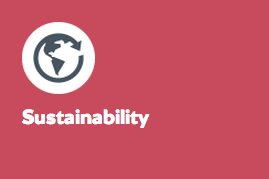
Last month, we rolled out a quick survey to better understand your greatest challenges/concerns as it relates to sustainability in the built environment. As you may recall, we had you rank the following from ‘very relevant’ to ‘not very relevant’:
- Starting
- Identifying ROI
- Identifying the greatest impact
- Water-related
- Energy-related
- Waste-related
- Other______
Here’s what you said:

Not surprising, the results indicate that identifying ROI, identifying impact and energy-related sustainability were your top three pain points—energy being the #1 challenge.
In reviewing the comments from the surveys, a common theme emerged addressing the “conversation” around sustainability. This conversation focuses on:
How do you make the business case and sell to key decision makers?
In many A/E/C organizations, sustainability is still viewed as a separate element from design, rather than INTEGRAL TO DESIGN. The conversation has to shift. When we think of sustainability, think “resource efficient”. In our case, it’s efficient design. It’s doing what you’re already doing, more efficiently in terms of resources used. It’s a paradigm shift to a way that is more efficient with how you deliver buildings. The term ‘sustainability’ has almost developed a poor representation for something that is just completed for the purpose of recognition–receiving a plaque to adorn a wall. But it is the right thing to do.
So, how do you make the business case? What’s the value proposition?
Much of this conversation depends on the organization. Often times, we own buildings for 50-100 yrs. We need to look at them as investments and understand where the money comes from, which ultimately affects how decisions are made. We have to understand motivations and drivers as they relate to resource consumption and efficiency. Towards this, there must be alignment of the organizational goals, mission, and vision with resource efficiency. Identifying that alignment (or lack there of) is a good starting point for creating the business case.
In general, you can look for ways to be efficient with design that aren’t the “big ticket” items.
Invest more in continuous monitoring of a building to understand how to improve it incrementally. Identify opportunities for Optimized Cx—look for low hanging fruit, without doing upgrades. If you can be selective in your timeline, you can generate enough savings from your initial, smaller investments, to fund the more capital-intensive projects. It’s a strategic timing approach in terms of dollars spent.
Even more critical than design, is the continuous monitoring once the building is operating. A building uses more resources and affects more lives while operating than while being constructed. They need to operate in a sustainable manner, which will improve occupant satisfaction and result in lower consumption of energy and water.
How does your firm view sustainability? What are your success stories or challenges to date? Join the conversation.
Arash Guity, Chief Sustainability Engineer
